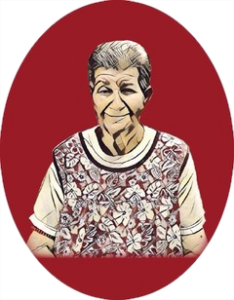When we become parents, we childproof our homes to ensure a level of comfort for not only the child but the family as well. Routinely assessing and responding to the needs of a home’s inhabitants and a home’s condition is a good idea to put into practice. Our needs change and our home should change to meet the needs.
As individuals age, concerns often rise about safety and comfort. Not every elderly individual needs to leave their home. Staying in a familiar setting can mean familiar surroundings and independence. However, making sure a home is safe as well as comfortable is the key step ensuring a healthy, comfortable life at home for the elderly. As with child proofing, it is better to anticipate meeting needs and to eliminate or reduce the possibility of injury.
Read on for things you can do to maintain a healthy, comfortable life for your elderly loved ones:
- Elderly typically need help around the house even if it does not involve caregiving. Sometimes the help needed is simple such as putting groceries away or changing a lightbulb. Other times, the help needed requires expertise such as plumbing or electrical issues. Consider the need for help when planning for visits, hired help etc.
- Routinely assess for tripping, slipping, and falling hazards. Spend some time walking through a home including the bathroom and kitchen to see what obstacles there might be. If there are significant concerns about falling, ask a specialist in eldercare to take a second look and offer additional suggestions.
- Consider when it is time to limit daily activities to one level in a multi-level home. Perhaps, a bedroom can be relocated to the main floor or a bathroom on the main floor can be updated so all living activities are located within a smaller area.
- Decide with your elderly loved one what chores need to be delegated to others and make arrangements to do so. Think laundry, taking out the trash, making the bed etc. But, leave lower risk tasks for your elderly loved one. Feeling a sense of autonomy and being able to help care for oneself maintains empowerment and independence. Don’t forget to post the list for all to see!
- Find and maintain relationships with professionals (handyman, plumber, electrician) who can tackle bigger jobs. Share with these professionals ahead of time that you may call upon them for help for your elderly loved one. While we might be able to wait for a plumbing issue, our elderly loved one may not have the patience or waiting may increase the possibility of household injury. A strong relationship with these professionals is key to a timely response.
- Consider whether arranging for fall alert wearable technology or installing cameras in your elderly loved ones will give your family and your elderly loved one more peace of mind. For some, these items are comforting. For others, they cause anxiety.
- Remember the power of community and neighborhood living. Having a strong relationship with others who live close and/or can visit can be reassuring to all. It doesn’t just take a village to raise children, it takes a village to honor our elderly.
- Create an emergency information document and print it on bright-colored paper. Place it by the front door so that it is easily accessible should it be needed. Include on the document important information such as emergency contacts, date of birth, insurance information, and relevant medical and prescription information. Telling those in the “village” about this document or having an extra copy of the document ensures the availability of important information.
- Consider exercise and socialization as key parts of a safe, comfortable lifestyle. Don’t leave it up to the elderly to make all of the plans by themselves. Work together to make a schedule and provide support if necessary to ensure exercise and socialization happen on a regular basis.
A bit of proactive attention to detail can be just the step to maintain safety and comfort and extend the living of the elderly in their own home.
For more articles related to helping the elderly, please visit www.laelderly.org

